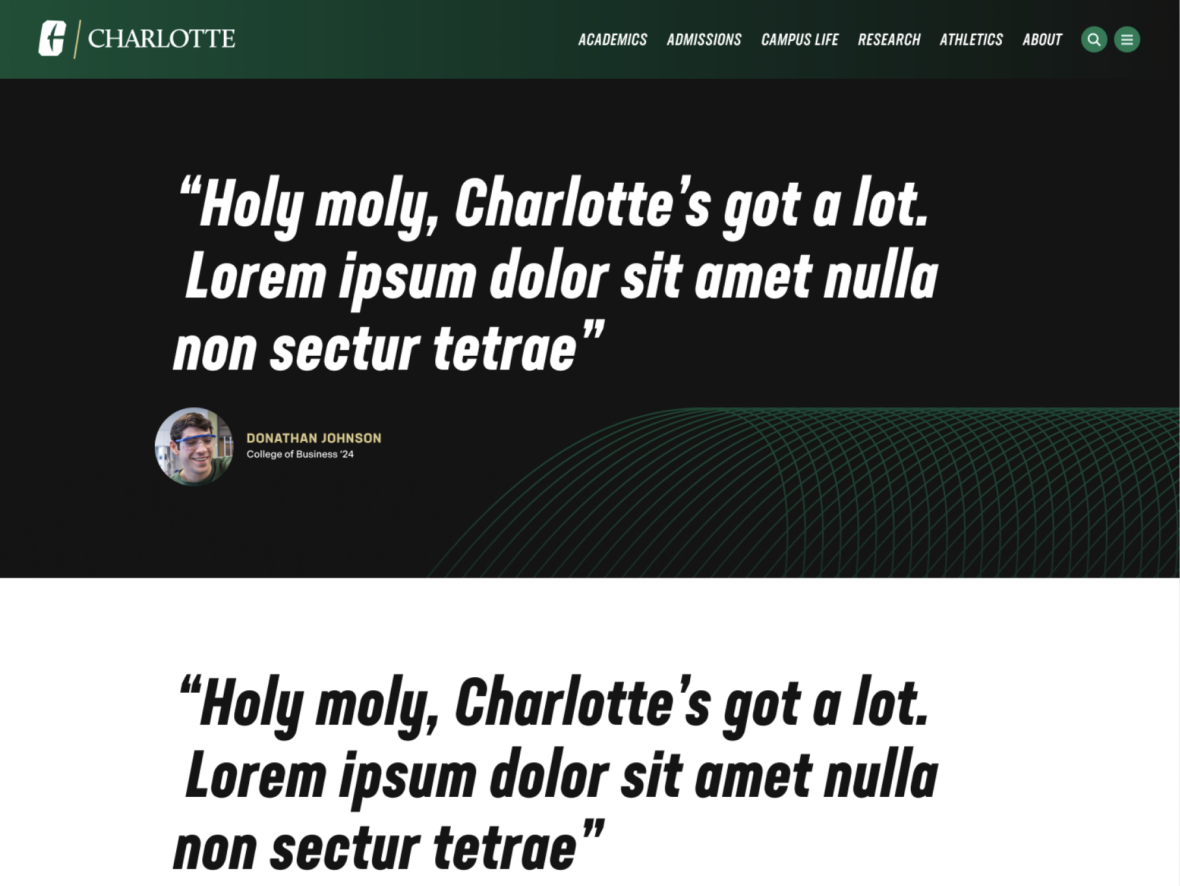Testimonials
The testimonial component highlights short, impactful quotes from interviews, reviews or feedback. Often displayed in a bold, eye-catching banner with attribution, it helps build trust and credibility by showcasing real voices and social proof.


When To Use This Component
You should strategically use a testimonial component to enhance credibility, provide authentic perspectives and engage various stakeholders, like prospective students, current students, alumni, donors, or the wider university community. Testimonials are particularly effective within the content of a page as a means of breaking up large swaths of text, adding visual interest and highlighting personable statements to build trust and add humanity to the page elements.
Shorter quotes work best as there is a character limit for this component.
USAGE EXAMPLES
- Pull quote from articles highlighting student or staff achievements in the larger community
- Student testimonials on program or admissions pages
- Quotes from alumni who have benefited from University resources on fundraising pages
Component Dos & Don’ts
There might be a time when you don’t know whether to use a testimonial component or not. Here are some examples of how to effectively use a testimonial component at Charlotte and when you shouldn’t use one:
DO
Place a prominent testimonial when you have an impactful statement to either highlight part of a longer body of text or want to provide social proof for a pages such as programs, events, student highlights, or departments.
DON’T
Avoid placing too many testimonial components on one page. A maximum of 1 to 2 testimonial components is recommended, using too many on one page can:
• Divert attention from the statements and make them lose their visual and storytelling impact
• Make a page feel too busy and broken up visually

Component Design Options
Below you will find an interactive example of the testimonial component and its various design options.
EDITABLE PARTS
- Background Color: Gray, Black, White
- Image Size: Large, Small
- Quote: “Holy Moly, Charlotte’s got a lot. Lorem ipsum dolor sit amet.”
- Name: John Doe
- Description (optional): College of Business ’24

